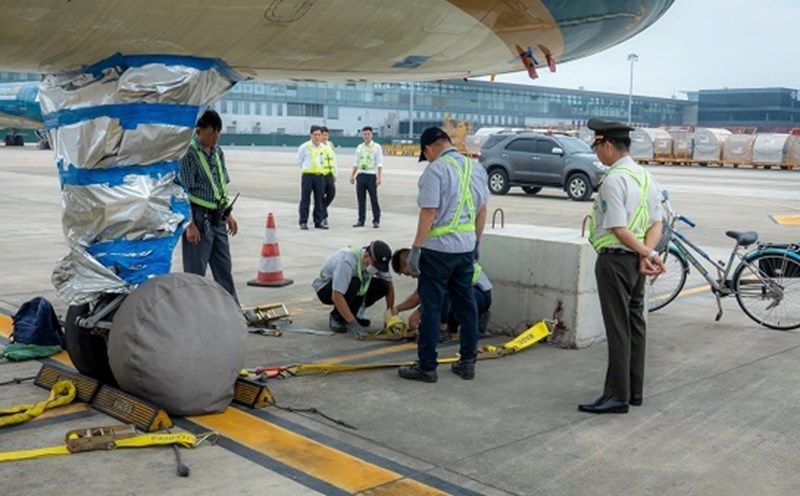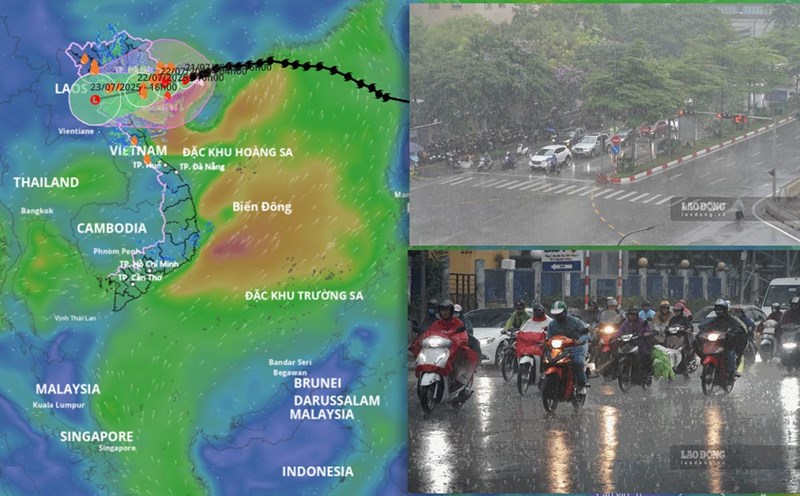According to the Traffic Safety Committee (Hanoi People's Committee), on the morning of July 19, the storm with the international name Wipha entered the East Sea and became the third storm of 2025, reaching level 10 intensity and gusts of level 12.
According to the forecast of the National Center for Hydro-Meteorological Forecasting, this is a very strong storm, moving quickly, and the range of influence at sea and on land is very large and dangerous.
Implementing the implementation of the Prime Minister's Official Dispatch No. 112/CD-TTg dated July 19, to ensure safety of inland waterway traffic, especially at cross-river passenger wharves in the context of responding to storm No. 3 Wipha, the Hanoi Traffic Safety Committee recommends:
City Police: Direct functional forces to prepare forces, vehicles, equipment, and plans to participate in ensuring traffic safety in the response to storm No. 3.
Department of Construction: Urgently direct the pruning of trees to ensure the safety of people during storms.
Develop plans to arrange forces and equipment to respond to traffic infrastructure incidents (flooded areas, incidents caused by fallen trees, incidents related to lighting systems, traffic lights, incidents at railway intersections, road system landslides, etc.) to ensure traffic safety.
Hanoi Transport Corporation, Hanoi Railway Company Limited (HMC): Closely monitor the developments of storm No. 3 to have timely response and information on mass media to ensure absolute safety for people participating in public passenger transport by bus and urban rail.
People's Committees of wards and communes in the city: Organize full updates and timely information on the natural disaster situation to the people in the area to proactively respond to ensure safety; propagate and guide people on response measures and skills, especially strong winds, flash floods, inundation, landslides, etc.
Strengthen information and propaganda work, especially on the local loudspeaker system about the storm situation and response measures; encourage people to minimize their participation in traffic in dangerous weather conditions such as storms, gusts of wind, thunderstorms, fallen trees, flying objects... which pose a high risk of causing traffic insecurity.
Be ready to deploy forces to guard and control people and vehicles through culverts, spillways, areas with deep flooding, fast-flowing water, landslides or areas at risk of landslides, resolutely not allowing people and vehicles to pass through if safety is not guaranteed, prevent unfortunate damage to people due to carelessness and subjectivity; arrange forces, materials, and means to overcome incidents, ensure smooth traffic on main traffic routes when heavy rain occurs; organize reviews and prepare evacuation plans for people from dangerous areas, especially areas at risk of landslides, flash floods, and deep flooding to ensure safety; prepare food, temporary accommodation, food, and essential necessities for people, and ensure stable lives.
For communes and wards with river wharves and water- surface entertainment areas: resolutely do not allow vehicles to depart from the wharf in stormy weather conditions, gusts of wind, thunderstorms, complicated fluctuations due to the impact of storms, etc., temporarily suspend the operation of water- surface entertainment areas in dangerous weather conditions to ensure absolute safety for people; prepare forces and means to promptly rescue and save when required.











